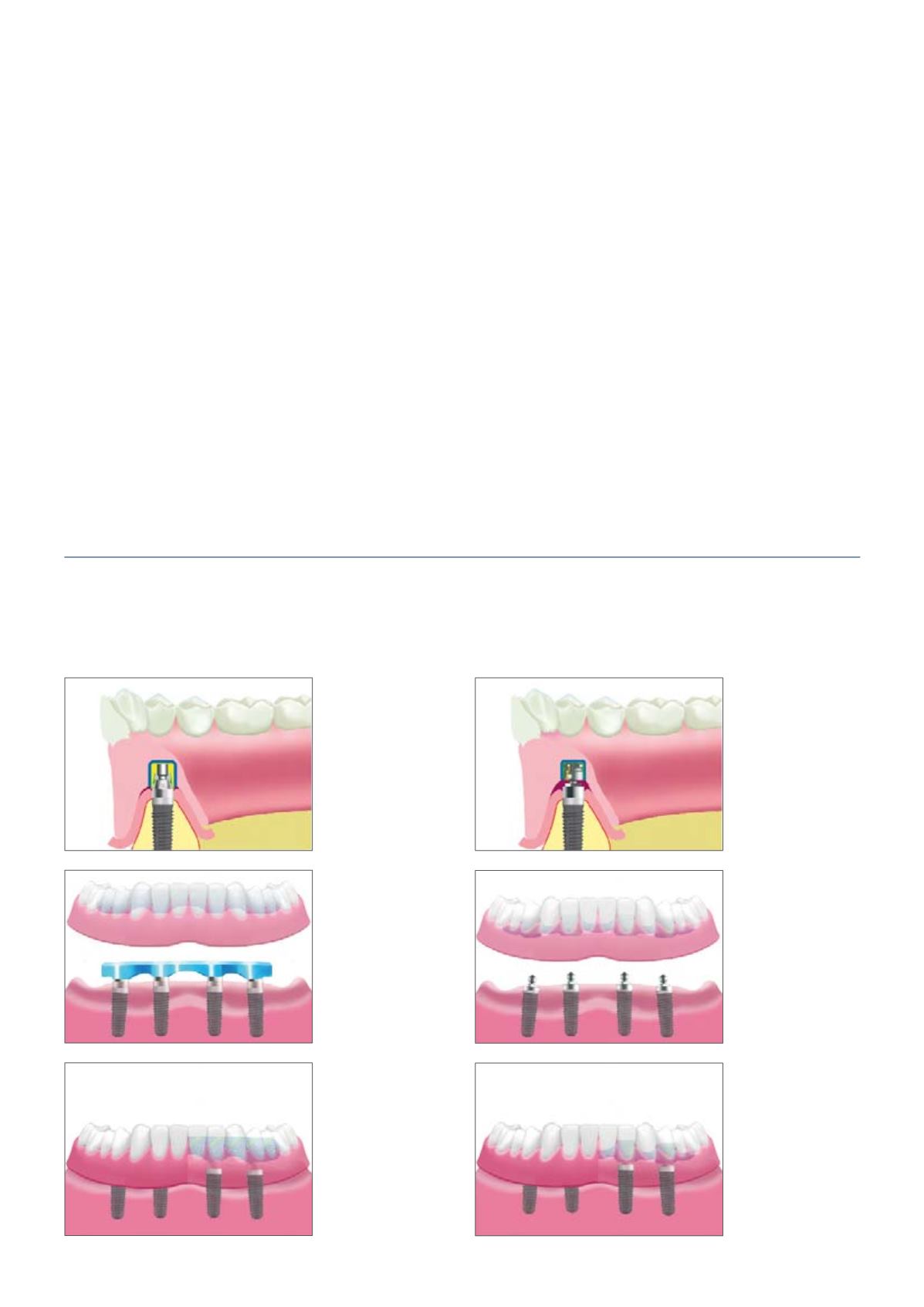

20 | 21
CAMLOG
®
Implant Position Planning
REMOVABLE RESTORATIONS
INTRODUCTION
A hybrid denture may be implant-retained mucosa-supported, or implant-
supported. The tension-free seat of a secondary (telescopic crown) or pri-
mary (bar-) splinted structure on implants is called “passive fit”.
In the case of telescopic crowns, this is obtained through intraoral bonding
of the secondary crowns (preferably galvano crowns) onto the tertiary
framework. In the case of bar structures, it involves the use of bar sleeves
for a passive fit and intraoral bonding of the titanium bonding base.
The idea is to create a fit that is free from stress or to minimize stress on the
implants.
When planning a removable denture, the implants should be placed so that,
if necessary, an extension to a fixed restoration is possible.
BAR STRUCTURE
Bars are suitable for jaw relations in Angle Class II and for large horizontal
deficits. It may be possible to fabricate a bar structure with either prefabri-
cated or individualized components.
BALL ABUTMENTS
The ball abutment is suitable for simple, implant-retained prosthetic resto-
rations. It is simply a retainer, but if the alveolar process in the mandible is
heavily atrophied, positional stability must be created through addition of
an extension prosthesis.


















